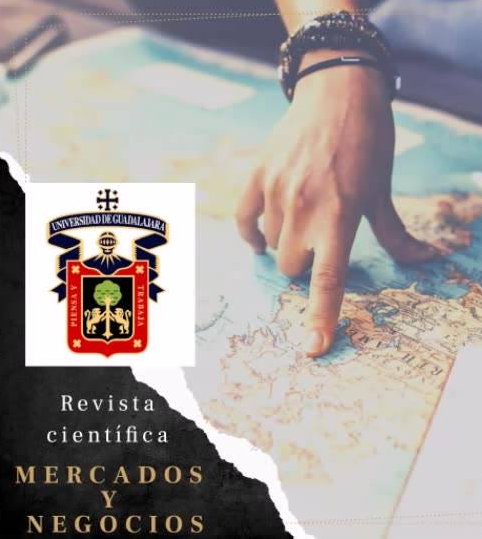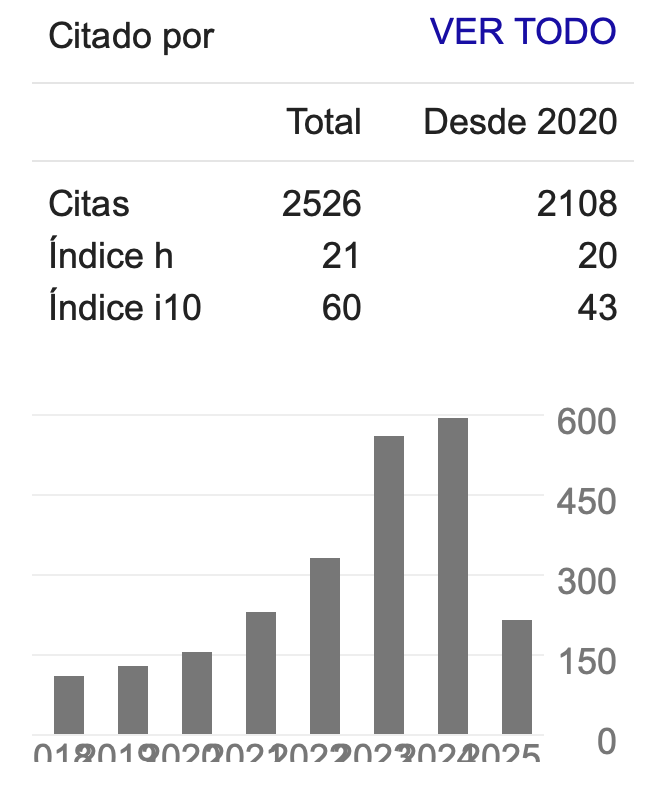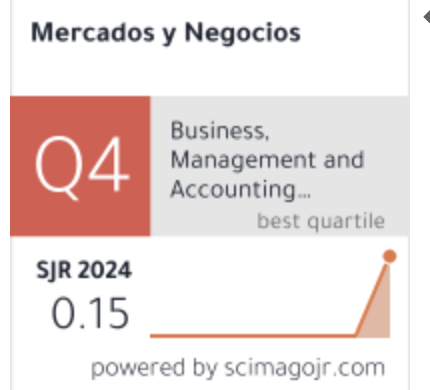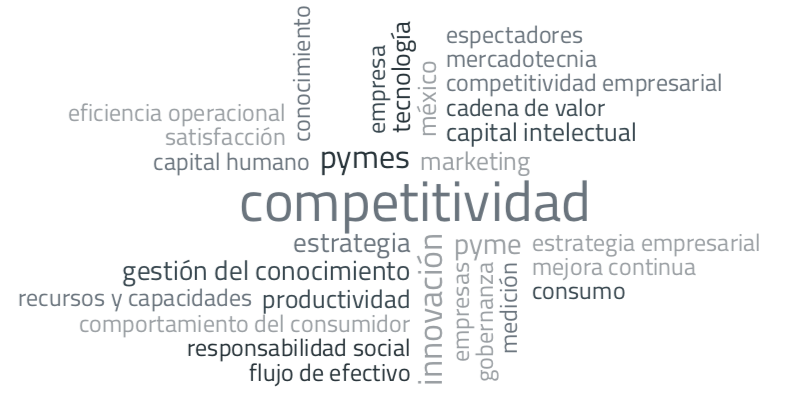Customer Relationship Management (CRM) linking with Marketing Knowledge (mk) in the electronic sector in Guadalajara, Jalisco, Mexico
DOI:
https://doi.org/10.32870/myn.v0i20.5118Keywords:
Administración de las relaciones con el cliente, conocimiento de la mercadotecnia, innovación, creación de productosAbstract
El propósito de este artículo es analizar cómo se relacionan las variables de la administración de la relación con los clientes, el desarrollo de nuevos productos y el conocimiento de mercadotecnia, en la industria electrónica en la ciudad de Guadalajara, Jalisco, México. También descubrir el impacto que estos factores tienen en la creación de nuevos productos, así como la implementación de información externa e interna en creaciones futuras. El análisis se llevó a cabo por medio de una investigación hecha a 25 empresas de la industria; la encuesta se realizó entre sus directivos. Además, las repercusiones de este estudio son los conocimientos en la práctica sobre la estructura de mk, las decisiones de desarrollo de productos con un enfoque de crm, así como las condiciones organizacionales que participan en el proceso.References
Anzai, Y., & Simon, H. A. (1979). The theory of learning by doing.Psychological review, 86(2), 124.
Bohling, T., Bowman, D., LaValle, S., Mittal, V., Narayandas, D., Ramani, G., & Varadarajan, R. (2006). CRM implementation effectiveness issues and insights. Journal of Service Research, 9(2), 184-194.
Boulding, W., Staelin, R., Ehret, M., & Johnston, W. J. (2005). A customer relationship management roadmap: What is known, potential pitfalls, and where to go. Journal of marketing, 69(4), 155-166.
Brännback, M. (1997). The knowledge-based marketing concept–a basis for global business. Human Systems Management, 16(4), 293-299.
Brewton, J., & Schiemann, W. A. (2003). Measurement: the missing ingredient in today's CRM strategies. Journal of cost management, 17(1), 5-14.
Buttle, F. A. (2001). The CRM value chain. Marketing Business, 96(February), 52-55.
Campbell, A. J. (2003). Creating customer knowledge competence: managing customer relationship management programs strategically. Industrial marketing management, 32(5), 375-383.
Croteau, A. M., & Li, P. (2003). Critical success factors of CRM technological initiatives. Canadian Journal of Administrative Sciences/Revue Canadienne des Sciences de l'Administration, 20(1), 21-34.
Day, G. S. (2000). Capabilities for forging customer relationships (No. 118). Marketing Science Institute.
Galbreath, J. (1998). Relationship Management Environments: What Kind Do You Have? What Kind Should You Rave?. Credit World, 87, 14-24.
Goodhue, D. L., Wixom, B. H., & Watson, H. J. (2002). Realizing business benefits through CRM: hitting the right target in the right way. MIS Quarterly executive, 1(2), 79-94.
Grönroos, C. (1995). Relationship marketing: the strategy continuum. Journal of the Academy of Marketing Science, 23(4), 252-254.
Grønhaug, K. (2002). Is marketing knowledge useful?. European Journal of Marketing, 36(3), 364-372.
Hayes, M. F. (2003). Partner relationship management: the next generation of the extended enterprise. The Ultimate CRM Handbook, McGraw-Hill, New York, 153-164.
Jayachandran, S., Sharma, S., Kaufman, P., & Raman, P. (2005). The role of relational information processes and technology use in customer relationship management. Journal of marketing, 69(4), 177-192.
Jutla, D., Craig, J., & Bodorik, P. (2001, January). Enabling and measuring electronic customer relationship management readiness. In System Sciences, 2001. Proceedings of the 34th Annual Hawaii International Conference on (pp. 10-pp). IEEE.
Kale, S. H. (2004). CRM Failure and the Seven Deadly Sins Are your CRM undertakings lost in a sea of failed or uncompleted projects?. Marketing Management, 13(5), 42-47.
Kotler, P., & Turner, R. E. (1979). Marketing management: analysis, planning, and control. Englewood Cliffs, NJ: Prentice-Hall.
Learning, O. (1978). A Theory of Action Perspective. Reading Massachuseps. Addison Wesley.
Lewington, J., de Chernatony, L., & Brown, A. (1996). Harnessing the power of database marketing. Journal of Marketing Management, 12(4), 329-346.
Li, T., & Calantone, R. J. (1998). The impact of market knowledge competence on new product advantage: conceptualization and empirical examination. The Journal of Marketing, 13-29.
Lindgreen, A., Palmer, R., Vanhamme, J., & Wouters, J. (2006). A relationship-management assessment tool: Questioning, identifying, and prioritizing critical aspects of customer relationships. Industrial Marketing Management, 35(1), 57-71.
Maselli, J. (2001). People problems. InformationWeek, 9(2001), 35-42.
Mithas, S., Krishnan, M. S., & Fornell, C. (2005). Why do customer relationship management applications affect customer satisfaction?. Journal of Marketing,69(4), 201-209.
Morgan, R. E. (2004). Market-based organisational learning-theoretical reflections and conceptual insights. Journal of Marketing Management, 20(1-2), 67-103.
Morgan, R. M., & Hunt, S. D. (1994). The commitment-trust theory of relationship marketing. The journal of marketing, 20-38.
Nykamp, M. (2001). The customer differential: The complete guide to implementing customer relationship management. Amacom.
Pan, S. L., & Lee, J. N. (2003). Using e-CRM for a unified view of the customer. Communications of the ACM, 46(4), 95-99.
Parvatiyar, A., & Sheth, J. N. (2001). Customer relationship management: Emerging practice, process, and discipline. Journal of Economic and Social research, 3(2), 1-34.
Payne, A., & Frow, P. (2005). A strategic framework for customer relationship management. Journal of marketing, 69(4), 167-176.
Payne, A., & Frow, P. (2006). Customer relationship management: from strategy to implementation. Journal of Marketing Management, 22(1-2), 135-168.
Peppers, D., Rogers, M., & Sengupta, S. (1995). The one to one future.
Peppers, D., Rogers, M., & Dorf, B. (1999). Is your company ready for one-to-one marketing. Harvard business review, 77(1), 151-160.
Perkins, W. S. (1993). The effects of experience and education on the organization of marketing knowledge. Psychology & Marketing, 10(3), 169-183.
Puschmann, T., & Alt, R. (2001, January). Customer relationship management in the pharmaceutical industry. In System Sciences, 2001. Proceedings of the 34th Annual Hawaii International Conference on (pp. 9-pp). IEEE.
Raman, P., Wittmann, C. M., & Rauseo, N. A. (2006). Leveraging CRM for sales: the role of organizational capabilities in successful CRM implementation.Journal of Personal Selling & Sales Management, 26(1), 39-53.
Reinartz, W., Krafft, M., & Hoyer, W. D. (2004). The customer relationship management process: Its measurement and impact on performance. Journal of marketing research, 41(3), 293-305.
Rigby, D. K., Reichheld, F. F., & Schefter, P. (2002). Avoid the four perils of CRM. Harvard business review, 80(2), 101-109.
Robinson, L., Marshall, G. W., & Stamps, M. B. (2005). Sales force use of technology: antecedents to technology acceptance. Journal of Business Research, 58(12), 1623-1631.
Rosch, E., Mervis, C., Gray, W., Johnson, D., & Boyes-Braem, P. (2004). Basic objects in natural categories. Cognitive psychology: Key readings, 448.
Ryals, L., & Payne, A. (2001). Customer relationship management in financial services: towards information-enabled relationship marketing. Journal of strategic marketing, 9(1), 3-27.
Schultz, D. E. (2000). Learn to differentiate CRM's two faces. Marketing News,34(4), 11.
Sinkula, J. M. (1994). Market information processing and organizational learning. the Journal of Marketing, 35-45.
Srivastava, R. K., Shervani, T. A., & Fahey, L. (1999). Marketing, business processes, and shareholder value: An organizationally embedded view of marketing activities and the discipline of marketing. The Journal of Marketing, 168-179.
Slater, S. F., & Narver, J. C. (1995). Market orientation and the learning organization. The Journal of marketing, 63-74.
Swift, R. S. (2001). Accelerating customer relationships: Using CRM and relationship technologies. Prentice Hall Professional.
Tseng, Y. M. (2006). International strategies and knowledge transfer experiences of MNC’s Taiwanese subsidiaries. The Journal of American Academy of Business, 8(2), 120-125.
Webster Jr, F. E. (1992). The changing role of marketing in the corporation. The Journal of Marketing, 1-17.
Wilson, D. T. (1995). An integrated model of buyer-seller relationships. Journal of the academy of marketing science, 23(4), 335-345.
Wilson, H., Daniel, E., & McDonald, M. (2002). Factors for success in customer relationship management (CRM) systems. Journal of marketing management, 18(1-2), 193-219.
Winer, R. S. (2001). A framework for customer relationship management.California management review, 43(4), 89-105.
Wright, M., & Ashill, N. (1998). A contingency model of marketing information.European Journal of Marketing, 32(1/2), 125-144.
Zablah, A. R., Bellenger, D. N., & Johnston, W. J. (2004). An evaluation of divergent perspectives on customer relationship management: Towards a common understanding of an emerging phenomenon. Industrial marketing management, 33(6), 475-489.
Zeleny, M. (1989). Knowledge as a new form of capital. Human Systems Management, 8(1), 45-58.
Žvireliene, R. (2006). Management of the vehicle trading company relationship with consumers and suppliers. Summary of Doctoral Dissertation, Kaunas, KTU.
Downloads
Published
How to Cite
Issue
Section
License
Mercados y Negocios by Department of Mercadotecnia y Negocios Internacionales. University of Guadalajara is licensed under a License Creative Commons Attribution-NonCommercial 4.0 International.
The author retains the copyright.








